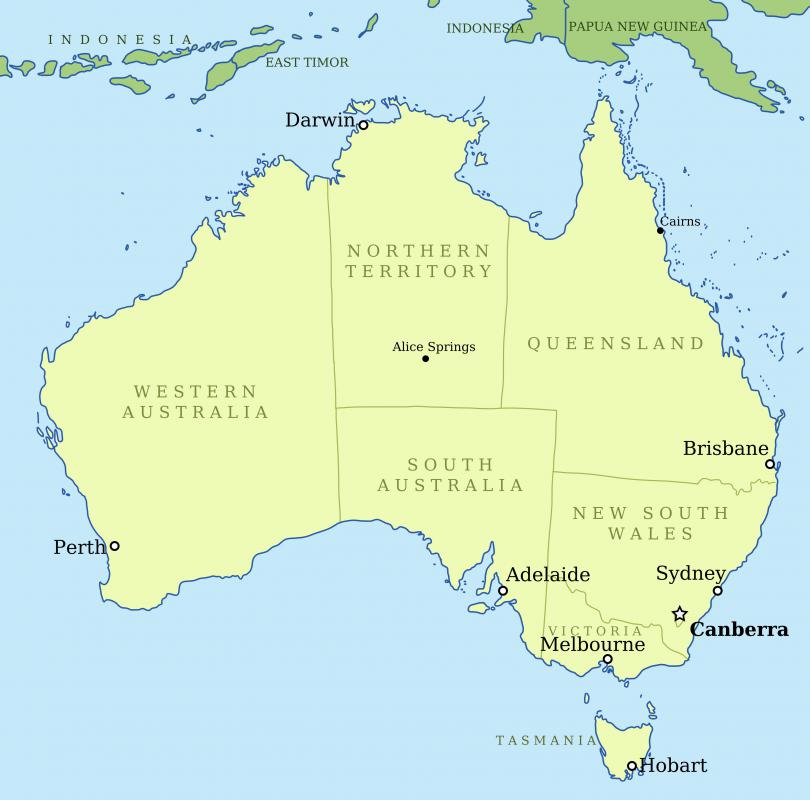At InfoBloom, we're committed to delivering accurate, trustworthy information. Our expert-authored content is rigorously fact-checked and sourced from credible authorities. Discover how we uphold the highest standards in providing you with reliable knowledge.
What is Bauxite?
Bauxite is a mineral bearing rock named for the region in France where it was first identified. One of the key components of bauxite is aluminum oxides, which can be processed to make aluminum products. Bauxite is mined in several regions of the world by a number of companies that are interested in aluminum products. These companies may sell the raw aluminum ore or process it to generate their own aluminum, depending on the size of the company and its business model.
This ore is usually reddish to brown in color in nature. It is formed through a process of weathering, leaching, and deposition, and often contains impurities like titania, silica, iron oxide, and aluminosilicate in addition to the aluminum oxides. When bauxite is processed, it yields alumina, which can be used on its own or used to produce aluminum. Aluminum is a widely used metal which can be seen in applications ranging from aircraft manufacture to home appliances, making a secure source of this metal very important.

Deposits of bauxite are often found near the surface of the Earth. For this reason, the open pit mining process is very popular for extracting it. Open pit mining can contribute to environmental degradation through the loss of topsoil, leaching of harmful chemicals, and erosion of natural formations, which makes it a concern in some regions of the world. Companies which engage in this practice are expected to meet environmental standards which are designed to minimize the environmental effects of mining.

One common problem with mining processes is the byproducts of mining and processing ore. Aluminum oxides are very valuable, but other components of bauxite may not be as useful. Companies need to find a way to extract as much ore as possible as cheaply as possible to keep production costs down, and then they must decide what to do with the leftovers after processing. These leftovers may be contaminated with chemicals used in processing, so they must be handled with care.
Australia is the leading producer of bauxite worldwide, with much of the ore being extracted by Alcoa. China, Brazil, Jamaica, and Guinea also have useful deposits of this mineral. Even with aluminum recycling, demand for raw bauxite is consistently on the rise and many nations are working hard to expand their production capacity and to determine what their maximum production levels might be if their bauxite resources were more fully exploited.
AS FEATURED ON:
AS FEATURED ON:












Discussion Comments
Thanks. this summary was definitely what I was after to understand bauxite clearly.
In these environmentally conscious times, mining companies are very careful to plan ahead to restore the earth and vegetation that they must disturb to get bauxite. I recently saw a television program about the methods these companies use to preserve and restore the ecosystems they alter.
While they are preparing a site, they remove the surface soil to get to the bauxite. They save the topsoil and will replace it after the operation. Also, over half of all bauxite mining companies keep their own nursery of plants to replace those they destroy.
Before operations even begin, plans to rehabilitate the area are made. The cost of replacement plants and re-soiling are figured into the cost of the total operation.
I teach a geology class, and we recently had a bauxite miner come in for show and tell. He told the students a few things about this rock, and I learned a few things, as well.
For starters, unlike most metal ores, bauxite needs no complex processing. This is because most mined bauxite is already of a good grade, or it may be improved by simply removing the clay. Clay can be removed by washing, hand picking, sorting, wet screening, cycloning, or any combination of these as needed.
We already knew that bauxite was used to make aluminum. However, we learned it is also used in blast furnaces, in steel and iron ladles, electric arc furnaces, torpedo cars, and cement.
This summary was most helpful. It was short and to the point with no extra information.
Post your comments